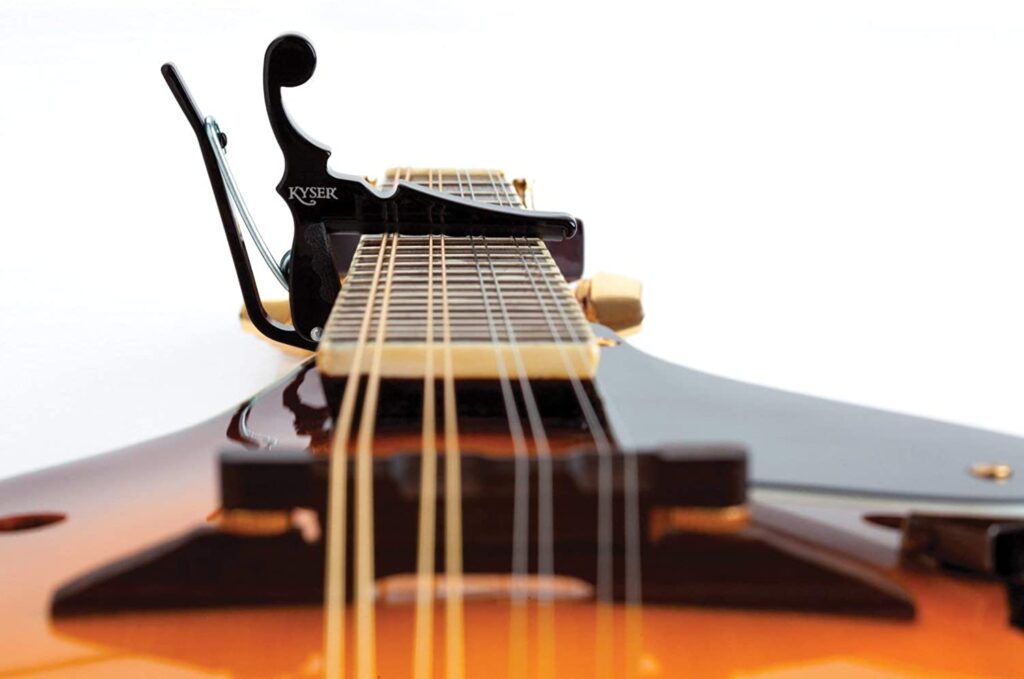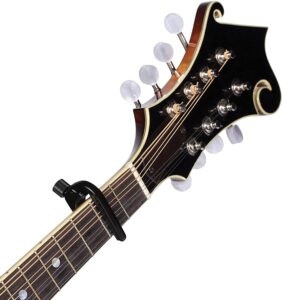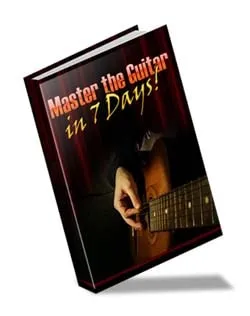All those familiar with the music world are also aware of the wonders a capo can do for your fretboard. Be it a guitar or ukulele, the small device clamping down on your instrument’s strings can get you the pitch you want without any changes in chords.
While beginners need not worry about getting a capo, it does make playing certain songs easier, especially when coupled with vocals.
Since it is not needed on a regular basis, most professional musicians don’t buy separate capos for their guitar and ukulele. While this is not advised because capos are built for a particular neck radius, giving a guitar capo a shot on your ukulele won’t hurt unless the capo is set too tight.

However, it does add weight to the instrument and may also affect chord progression. Some guitar capo designs like the Kyser for a classical guitar may work, but it is best to get your hand on the similarly cheap and readily available ukulele capos in the market.
How can a guitar capo affect your ukulele?
If you’re planning to settle for a guitar capo, here are some inconveniences it can cause during your ukulele experience, which you should be aware of:
1. The accessory will extend past the instrument’s neck.
Since a guitar capo is meant to clamp down six strings rather than the ukulele’s standard four, the neck radius and size of the capo vary greatly, which will surely affect your playing.
2. The guitar capo can cause an imbalance in the neck and body of your uke.
Putting a large capo on a narrow neck adds weight to the neck, creating an unpleasant imbalance in the structure. It also takes away the appealing compactness for which a ukulele is usually preferred.
3. The stronger clamping strength can cause serious wear and tear to your strings.
Nylon strings, commonly used in ukuleles, are much softer than the steel ones used in acoustic guitars. Thus they deteriorate quickly and become more prone to breakage.
4. It may render chord progression inefficient.
The large size and added tension add restrictions to your playability. Your efficiency of switching between chords reduces, and the lower frets don’t play so well either.
What are the different types of ukulele capos available?
 In case you’ve decided to invest in a ukulele capo and need a little foresight before you purchase one, the following are the various kinds you will come across:
In case you’ve decided to invest in a ukulele capo and need a little foresight before you purchase one, the following are the various kinds you will come across:
Spring-Loaded
Known for their simplicity and ease of use, a spring-loaded or trigger capo is simply a smaller version of a traditional guitar capo. One just has to pull the lever, clamp it onto the fretboard where it clasps the strings with ease and release it.
While they can be moved around the fretboard with one hand, the simple design does not allow for an easy way to adjust the pressure. If the capo presses down too hard, it could bend the strings out of tune.
Thumbscrew and C-Clamp
While they have multiple dissimilar features, the thumbscrew and c-clamp capos have the same basic clamping principle. The two bars hold the string and the back of the fretboard, and the screw or toggle can be tightened or loosened to adjust the tension on the strings.
This design prevents excess pressure on the strings and also reduces buzzing. However, these capos are more difficult to move around the fretboard and require loosening the screw each time.
Elastic
These capos are not readily available and are also considered the hardest to use, but they are the most affordable option in the market. They require stretching across the neck and need to be hooked to a metal eyelet to remain in place. Over time, they may cause the strings to detune, harming playability. Most people mainly prefer them due to their lightweight nature, which adds negligible weight to your ukulele neck.
Which ukulele capos are best for your instrument?
Shubb Lite Ukulele Capo
Hand-made in the U.S. with durable aluminum, an anodized silver body, and replaceable pads at contact points to prevent wear and tear, the Shubb Lite uses a patented toggle to lock the capo in place.
Planet Waves NS Capo
A compact, modern, and buzz-free design presents itself in the form of this Planet Waves ukulele capo, with the micrometer tension adjustment, aircraft-grade aluminum body, and in-tune performance owing to its popularity.
Kyser Quick Change
The Kyser Quick Change is known for its flexibility across banjos, ukuleles, and mandolins, along with its one-handed use. The steel string attached to the lightweight aluminum body requires no dialing in or adjustments.
Dunlop 7828 Bill Russell Capo
At the most affordable price, this Dunlop elastic capo features an old-school design, tight wrapping, low-profile presence, and convenient sliding along the neck, appealing to all lower-end consumers.
Conclusion
Whether you’re investing in a ukulele capo or going for the guitar one you have lying around, it is essential to prioritize playability over safety. Most guitar capos won’t damage your strings, but the music output won’t be the same.
Furthermore, if you are opting for a guitar capo, an electric guitar one will work best with your ukulele as it has lower clamping strength than those manufactured for acoustic guitars.
Lastly, if you’re altogether leaving out a capo due to lack of availability or personal preference, learning how to transpose with music theory and other methods is a great way to challenge yourself on this musical journey.





 Sign up to receive a free ebook: Master The Guitar in 7 days! (available for a limited period)
Sign up to receive a free ebook: Master The Guitar in 7 days! (available for a limited period)